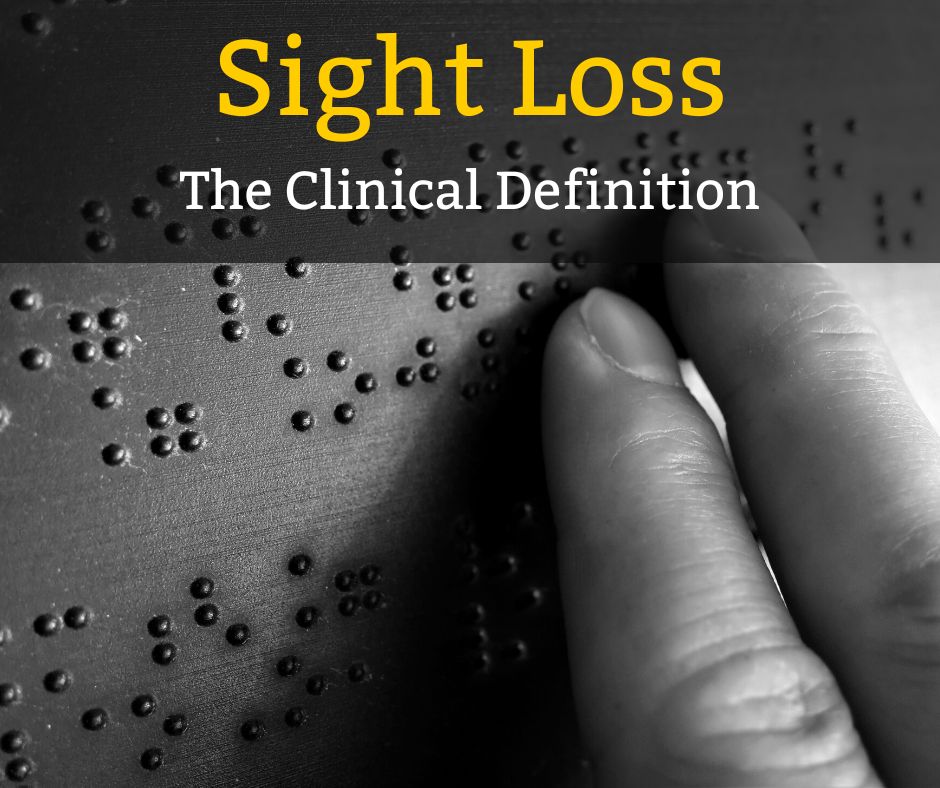A person is considered legally blind if they have a visual acuity of 20/200 or worse in their better eye with corrective lenses or if their visual field is less than 20 degrees.
However, more is needed to serve as a sufficient explanation. Instead, it’s a means to give formal recognition in measurable medical terms to something that defies medical and physical definition in favor of focusing on function.
Forget the technical terms for a second and try to describe blindness. When this topic was asked to a group of high schoolers once, one of them, seemingly unaware of the radical nature of their claim, said that someone is blind if they “can’t see.”
They were asked to put themselves in the shoes of someone colorblind, meaning they could see the light but not objects. Someone who would constantly run into things unless aided by a cane, dog, or other mobility assistance, and someone who relied solely on her eyesight would walk directly into a telephone pole or a fire plug.
The students finally decided that they would regard such a person as blind after some initial hesitance. Blindness is not only the inability to perceive objects, people, or events.
Despite having normal (20/20) vision in both eyes, a man can be so sensitive to light that he could not keep his eyes open during daylight hours. Any exposure to light was so painful that he could only open his eyes by prying them apart with his fingers.
Although it hurt like hell, this individual could read the eye chart. A student considers whether or not they would have approved the financial aid if they were the ophthalmologist. When asked, she responded with an affirmative.
They were reminded that it was against the law to help someone who wasn’t legally blind. “If you had known about it, would you still have helped?” The pupil promised they would. One can have “perfect sight” and still be blind in the physical, literal sense of the word.
Then a student was asked one last question: Would it be correct to describe a sighted individual as blind if he were placed in a vault so dark that he could see nothing? The student finally said “no” after considerable deliberation and uncertainty. She was told she was right for the third time. Then prompted her to take a look at the findings.
No, being blind does not prevent one from seeing. Second, one can have “excellent sight” but still be visually impaired. Even if a person has no vision, they can be considered to be seeing.
Given these apparent inconsistencies, how can we define blindness?
Blindness is when a person has to devise creative solutions to the same problems he would generally have no trouble solving if he had regular eyesight.
The term “blind” or “blind person” is appropriate when describing an individual who must make extensive adjustments to his usual routine because of his inability to rely on sight.
A person with better vision than the amount mentioned in the definition will likely not have to devise so many such techniques to alter his daily living patterns substantially. The commonly accepted legal definition of blindness already given is simply one medical way of measuring and recognizing this.
On the other hand, if one’s eyesight is less than what is required by law, they will typically need to come up with so many such alternative strategies that they will have to alter their habits of everyday existence significantly.
Applying this criterion to the three previously mentioned situations could be instructive. Consider someone who can see in the dark but can’t see much else. Before retiring for the night, if he is curious as to whether or not the lights have been turned off in his residence, he need only take a stroll around the house to “see.”
If he did not have light perception, he would have to use another method, such as touching the bulb, telling by the position of the switch, asking a sighted person, or inventing his system. Despite this, it is still accurate to call this person blind.
In the grand scheme, this one visual trick he employs doesn’t even register as a blip. His routine has been drastically changed. To function well, he must rely on non-visual means of accomplishing the tasks that typically require his eyesight.
Now, let’s think about someone who has 20/20 vision but is so light-sensitive that he can’t keep his eyes open for very long. Because of his visual impairment, he needs to develop creative workarounds for any task that usually requires sight.
He is appropriately labeled a “blind person.” And finally, what happens to a sighted individual thrown into a dark vault? She has nonetheless been deemed a “sighted person” despite having no vision. In other words, she employs the same strategies that a sighted person would use. In this case, no visual methods will be of any use. In this situation, someone blind might be able to do more than one thing.
The most helpful definition of blindness is based on functional or social sciences rather than physical or medical sciences. Individuals who lose their sight as adults have the same number of skills and abilities to work around their disability as those who are born blind.
People who are legally blind but are “partially sighted” have similar experiences to people who are not legally blind but have significant visual impairments.
That is to say. It’s pointless primarily to make the complicated distinctions between people who are partially sighted and those who are entirely blind or between people who have been blind since they were children and those who have become blind later in life.
They are typically counterproductive because they highlight the wrong aspects of blindness. Blind people may face their most significant danger in the workplace today in the form of jargon, which can be hard to understand.



